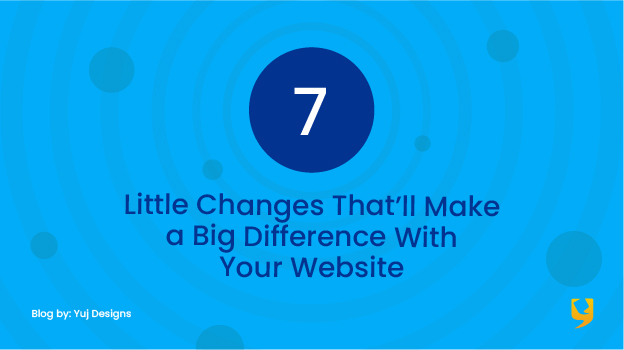
In today’s digital age, every business owner has a website. The world has become smaller and has come closer than ever before. Well-executed websites are the best solutions to help grow your business, improve digital presence and authenticate your identity. In a world full of digital advancements, you need to focus more on communicating the core of your business. The core strengths of your brand.
While putting up a website will increase your chances of business awareness and driving quality business leads. At the same time, if the website is executed poorly, it may increase the bounce rate and would result in an offset in conversion rate. Without a well-executed UX, improving the business prospects becomes difficult. To help you out of this muck, here are 7 tips that will make a big difference in your website.
1. Consider users’ goals and motivations
Few decades ago, the term experience economy was coined by James H. Gilmore and B. Joseph Pine II. The duo claims that consumers seek experiences above and beyond products and services, which couldn’t be any further from the truth even today. In order to thrive, businesses must think and act in the best interests of their customers. Understanding their choices, needs, behavioral patterns among many other things is of utmost importance. Always remember, to design the product for the users by addressing their pain areas and developing the product according to their insights.
2. Design a Strategy
Before starting the designs, set a strategy that will help the design team understand the vision of the product. This strategy is going to help the design team build a product that resonates with and reflects the aspired brand personality, through content, tone of voice, design and details. Once the strategy is in place, the design team can move on to the next crucial phases like conceptualization and problem solving.
3. Apply Design Thinking
Design thinking is rightly described as creative problem solving. Businesses essentially are solving problems, providing solutions that are innovative and that add value to the community. Applying design thinking to websites, will not only attract more traffic but also enhance the experience for the user. They know what they like and what they want. Not being able to find what the user is looking for will delay the actions and eventually risk the user losing interest in the website. It is crucial on the designer’s part to offer a seamless experience, guide the user subtly towards the next possible step and keep them engaged throughout their journey.
4. Practise Detailed Design
Each design element – every form, colour, call to action button should have a strong backing of reason and logic. These visual guides have the power to influence the behavior of the user. Using these guides in wrong places may mislead or confuse the user. These design decisions also need to be tracked, measured and analyzed at every step to ensure optimum results in order to reduce the users’ effort.
5. Adaptability of Design
Your audience may view the website on various devices, under different circumstances. In order to deliver a consistent experience, the design needs to be adaptable. Pre-empting the future scenarios and designing for those adds value to the overall experience.
6. Craft a Holistic Experience
Going through a website is quite similar to visiting a shopping mall where you rely the most on directional signages and the overall structure of the mall, the legibility of the store names. The malls are designed by taking into consideration, the crowd and their behavior, what would attract them and engage them the most. Creating a complex journey to reach the desired destination already dampens the anticipation, excitement of the audience even before coming to the store. This hampers the overall experience. In a similar fashion, it is imperative that the design should efficiently guide the customer through the most hassle-free yet delightful journey possible. e.g.- reducing the number of clicks.
7. Emotional Connect
The structure, navigation, information hierarchy and even the contact page of a website should communicate the core beliefs of the business clearly. Uploading all the necessary contact information about you establishes trust in the minds of the user. Transparency and authenticity are vital to almost all users to stay on the website for a longer duration. Similarly building an emotional connect with the audience as per the business and industry is essential. e.g. – www.theculturetrip.com
This brand appears is approachable, resourceful, honest and transparent.
Amplify your brand presence with the best UX design studio that truly aligns your needs with those of your consumers! Get in touch with us at YUJ Designs, today!






